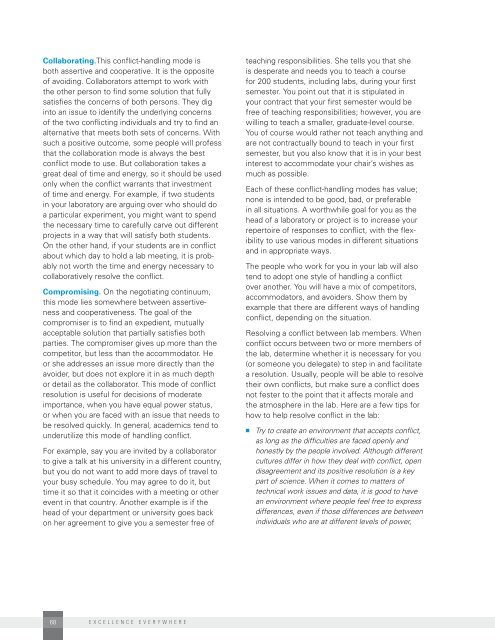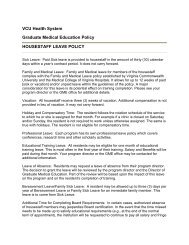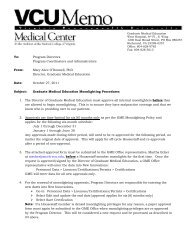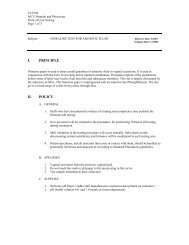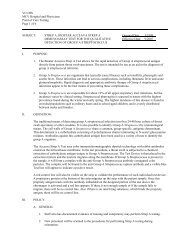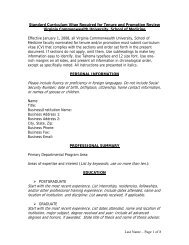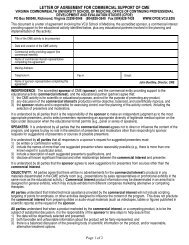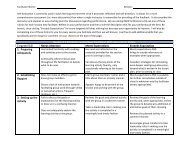Excellence Everywhere - National University of Ireland, Galway
Excellence Everywhere - National University of Ireland, Galway
Excellence Everywhere - National University of Ireland, Galway
- No tags were found...
Create successful ePaper yourself
Turn your PDF publications into a flip-book with our unique Google optimized e-Paper software.
Collaborating.This conflict-handling mode isboth assertive and cooperative. It is the opposite<strong>of</strong> avoiding. Collaborators attempt to work withthe other person to find some solution that fullysatisfies the concerns <strong>of</strong> both persons. They diginto an issue to identify the underlying concerns<strong>of</strong> the two conflicting individuals and try to find analternative that meets both sets <strong>of</strong> concerns. Withsuch a positive outcome, some people will pr<strong>of</strong>essthat the collaboration mode is always the bestconflict mode to use. But collaboration takes agreat deal <strong>of</strong> time and energy, so it should be usedonly when the conflict warrants that investment<strong>of</strong> time and energy. For example, if two studentsin your laboratory are arguing over who should doa particular experiment, you might want to spendthe necessary time to carefully carve out differentprojects in a way that will satisfy both students.On the other hand, if your students are in conflictabout which day to hold a lab meeting, it is probablynot worth the time and energy necessary tocollaboratively resolve the conflict.Compromising. On the negotiating continuum,this mode lies somewhere between assertivenessand cooperativeness. The goal <strong>of</strong> thecompromiser is to find an expedient, mutuallyacceptable solution that partially satisfies bothparties. The compromiser gives up more than thecompetitor, but less than the accommodator. Heor she addresses an issue more directly than theavoider, but does not explore it in as much depthor detail as the collaborator. This mode <strong>of</strong> conflictresolution is useful for decisions <strong>of</strong> moderateimportance, when you have equal power status,or when you are faced with an issue that needs tobe resolved quickly. In general, academics tend tounderutilize this mode <strong>of</strong> handling conflict.For example, say you are invited by a collaboratorto give a talk at his university in a different country,but you do not want to add more days <strong>of</strong> travel toyour busy schedule. You may agree to do it, buttime it so that it coincides with a meeting or otherevent in that country. Another example is if thehead <strong>of</strong> your department or university goes backon her agreement to give you a semester free <strong>of</strong>teaching responsibilities. She tells you that sheis desperate and needs you to teach a coursefor 200 students, including labs, during your firstsemester. You point out that it is stipulated inyour contract that your first semester would befree <strong>of</strong> teaching responsibilities; however, you arewilling to teach a smaller, graduate-level course.You <strong>of</strong> course would rather not teach anything andare not contractually bound to teach in your firstsemester, but you also know that it is in your bestinterest to accommodate your chair’s wishes asmuch as possible.Each <strong>of</strong> these conflict-handling modes has value;none is intended to be good, bad, or preferablein all situations. A worthwhile goal for you as thehead <strong>of</strong> a laboratory or project is to increase yourrepertoire <strong>of</strong> responses to conflict, with the flexibilityto use various modes in different situationsand in appropriate ways.The people who work for you in your lab will alsotend to adopt one style <strong>of</strong> handling a conflictover another. You will have a mix <strong>of</strong> competitors,accommodators, and avoiders. Show them byexample that there are different ways <strong>of</strong> handlingconflict, depending on the situation.Resolving a conflict between lab members. Whenconflict occurs between two or more members <strong>of</strong>the lab, determine whether it is necessary for you(or someone you delegate) to step in and facilitatea resolution. Usually, people will be able to resolvetheir own conflicts, but make sure a conflict doesnot fester to the point that it affects morale andthe atmosphere in the lab. Here are a few tips forhow to help resolve conflict in the lab:n Try to create an environment that accepts conflict,as long as the difficulties are faced openly andhonestly by the people involved. Although differentcultures differ in how they deal with conflict, opendisagreement and its positive resolution is a keypart <strong>of</strong> science. When it comes to matters <strong>of</strong>technical work issues and data, it is good to havean environment where people feel free to expressdifferences, even if those differences are betweenindividuals who are at different levels <strong>of</strong> power,68 excellence everywhere


